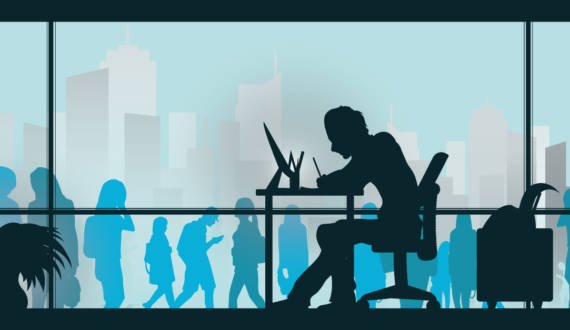Why Can’t I Find A Therapist?
Every person faces at least one mental health challenge at some point in their life. It could be related to anxiety, depression, response to a pandemic, substance abuse, domestic abuse, losing a loved one, or any life change one must face. If over 46.6 million people suffer from a known mental health disorder in the United States, why are only half of these people seeking help from a mental health professional? Simple, there are not enough licensed behavioral health professionals in the United States. Before the COVID pandemic hit research conducted by the Health Resources and Services Administration projected that by 2025 the shortage of behavioral health professionals would increase to around 250,000 workers (psychiatrist, clinical, counseling, psychologist, substance abuse counselors, etc.). Now, with the pandemic, it is worse. So why does the shortage keep rising tremendously every year?
Well, for starters, these behavioral health professionals are not getting the credit they deserve. These health professionals historically have low wages and high caseloads demands, causing a high burnout and turnover rate. The average therapist must complete a four-year bachelor’s degree, a two-year master’s degree program, and many must complete a one-year internship. With all that schooling and costs, these therapists, on average, make only 35k-61k, which will hardly allow them to pay back student loans and cover the cost of living. Psychiatrists’ average salary is 170k-420k, but they must complete a bachelor’s degree and medical school, many leave schools with thousands in debt. People interested in these fields of work do not want to incur these costs.
Another reason the shortage is increasing each year is the public stigma about mental health is changing. The stereotypes, prejudice, and discrimination many people faced throughout history when trying to seek help are declining. Today, more people are educated and aware of mental health, especially with the pandemic occurring. Even though it may be uncomfortable for some, more people are seeking help when they need it.
Even with the stigma of mental health fading away, many minority groups are still not comfortable seeking help. With the heightened focus on social justice in the last couple of months, many black people have spoken out about the need for more black behavioral health professionals. In 2013 83.6% of the active psychologist were white, only 5.3% were African American, 4.3% were Asian, 5.3% were Hispanic, and 1.7% were other minorities. These numbers have only altered a little throughout the years. With the pain suffered historically and intensified recently, many in the black community have sought mental health care, but they are limited in their choices. Many express that the reason they do not seek help from white professionals is that these professionals do not understand the anger and historical heritage they have and share. It is not surprising that all people want and deserve a professional that shares their unique challenges and struggles.
Another main concern is that many rural areas do not have any behavioral health professionals located anywhere close to them, making it difficult for people to seek help. Some potential clients may not want to or cannot pay for transportation costs. Other prospective clients need to work and do not have time to travel an hour or so away for treatment.
Insurance policies are preventing people from seeking help, as well. There is a low reimbursement rate for behavioral health services in Medicaid, Medicare, and other health insurance. Many behavioral health providers cannot sustain their day to day operations with these low rates, and they are more likely to focus and treat individuals who can afford private pay.
There are a few solutions that address these issues. In 2014, there was an establishment of Certified Community Behavioral Health Clinics (CBHC). CBHCs show with adequate funding, clinics can cover the cost of care, and they can provide health professionals with a competitive salary, which increases job satisfaction, and the burnout decreases. This program or other programs like this need to be continued and expanded throughout the United States. Continued success requires that reimbursement rates need to start matching the cost of care. Adequate reimbursement rates must provide clinics the finances they need to cover their cost of care and allow providers to offer more treatment to more individuals.
Telehealth is another aspect of the solution in the behavioral health world. Telehealth has become more popular in the United States during the COVID pandemic. It allows behavioral health providers to meet and treat patients remotely. This increases access to rural locations, decreases no shows, enables professionals to meet with more patients, and decreases the professional’s paperwork. Telehealth must remain a viable solution going forward. The long-term solution must also include the increased reimbursement rates implemented due to COVID, the loosening of cross-state licensing, and the ability for Telehealth providers to prescribe medications.
Meeting behavioral health needs for all Americans is a significant challenge. With the rising cases of behavioral health issues, we need to address the problem of a shortage of mental health professionals. Changes need to be implemented into the behavioral health world before it is too late to fix. Everyone deserves to have access to help they need if suffering from a behavioral health issue.



